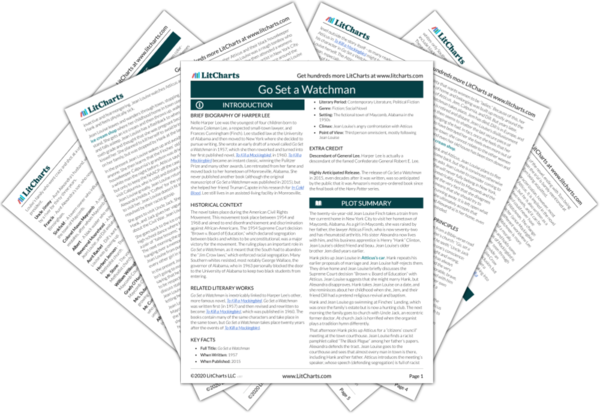Most readers will share in Jean Louise’s disillusionment because we don’t just know Atticus from her brief memories of him in
Watchman, but have also experienced the depths of his character through
To Kill a Mockingbird. Thus Jean Louise’s painful experience is echoed on the meta-textual level—the level of the reader—as well.
